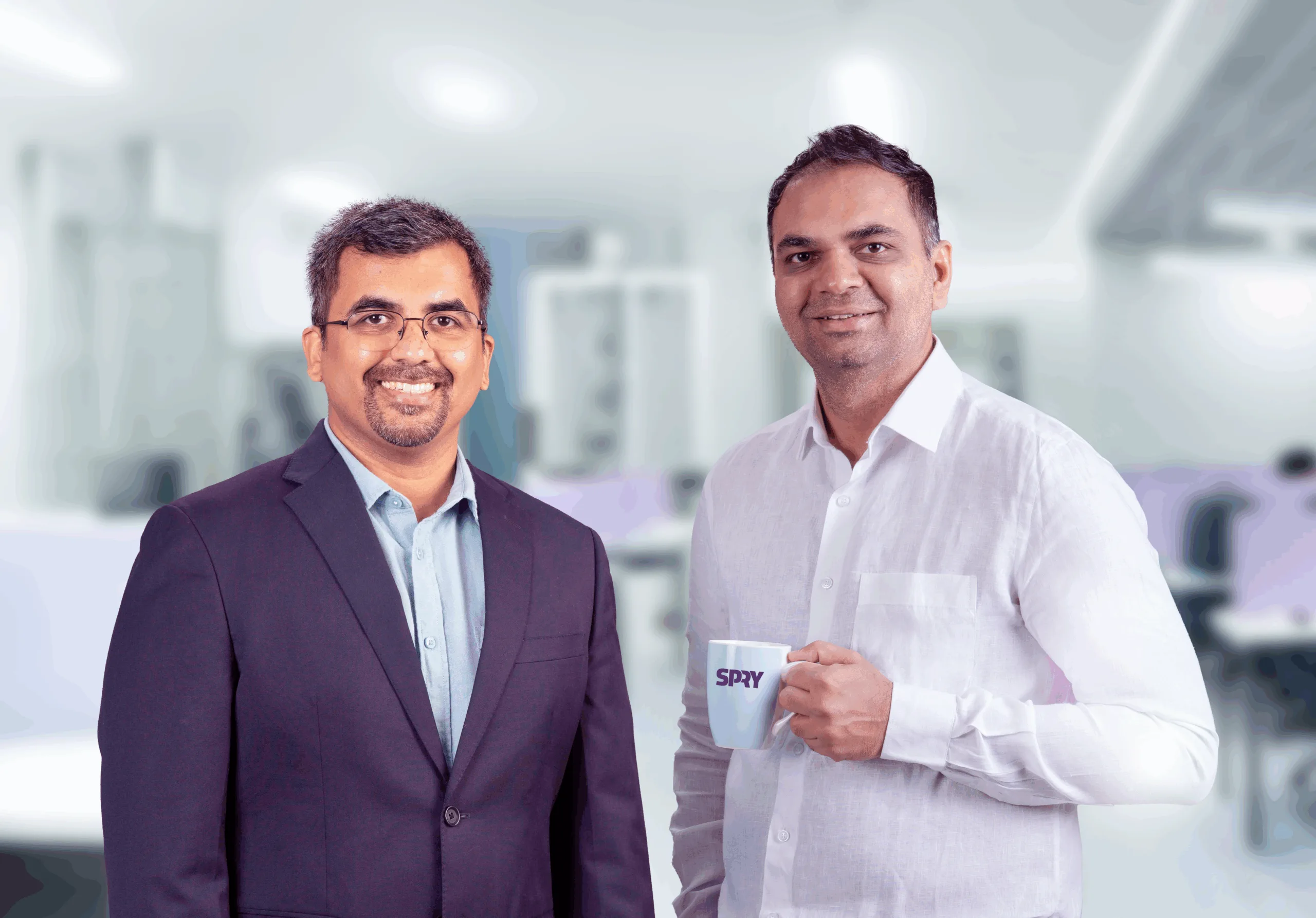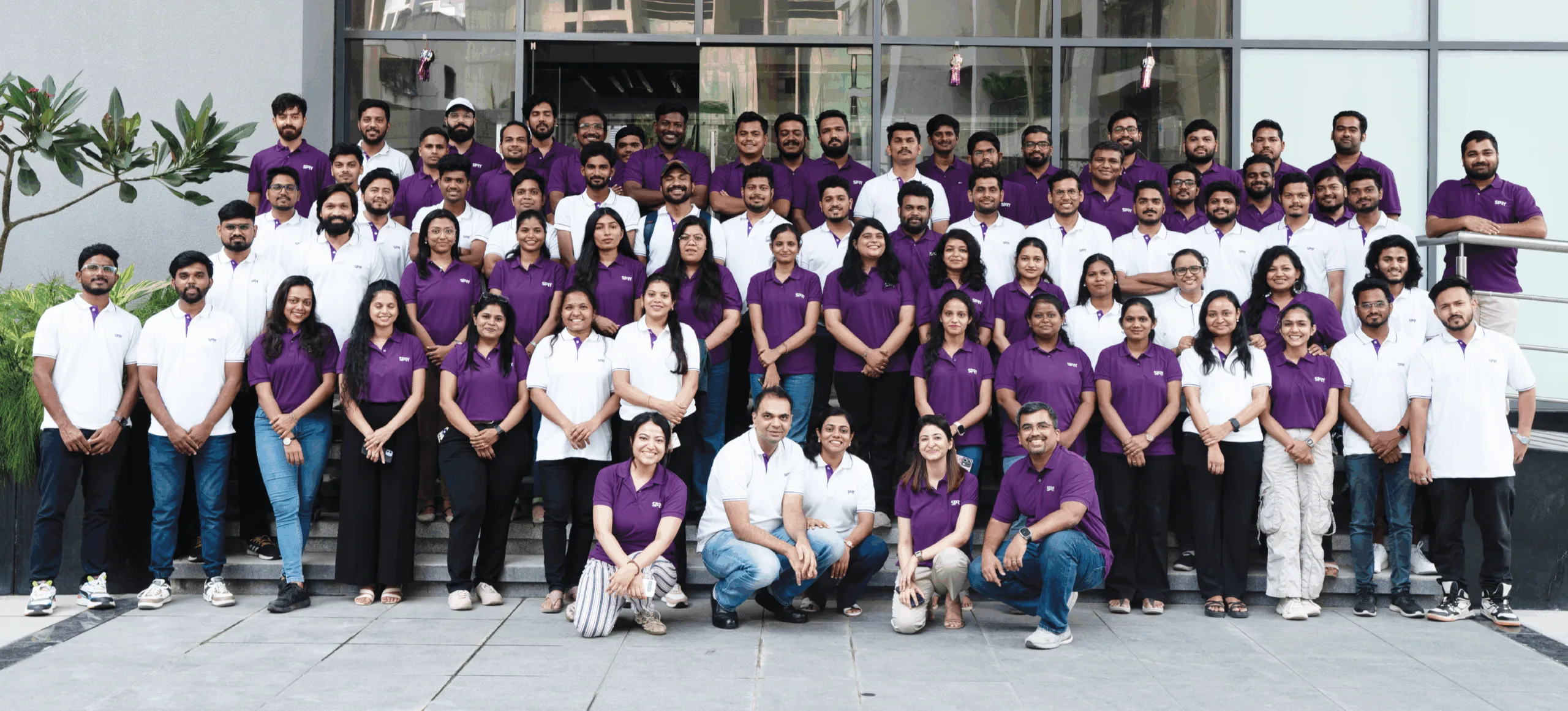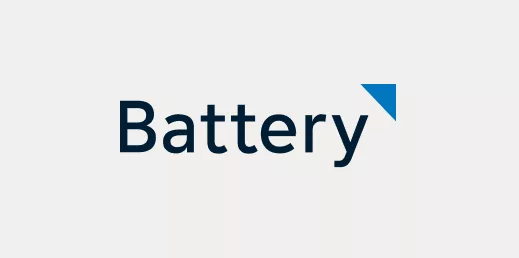How Indian founders are rebuilding the infrastructure that powers American healthcare.
An Indian engineering team just raised $25 million to deploy AI agents across America’s healthcare system.
SPRY Health, founded by former Ola CTO Brij Bhuptani and Riyaz Rehman, has built autonomous billing agents that achieve 90% first-submission claim acceptance – outperforming human processors stuck at 70-75% industry standard.

In 18 months, SPRY has processed over $100 million for 170 US clinics, ranking #2 on G2 despite not existing in the category a year ago.
This is how Indian AI founders can leverage domain expertise to disrupt entrenched US markets.
The Ola-to-Healthcare pivot
Bhuptani’s transition from mobility logistics to healthcare infrastructure reveals the playbook for category jumps.
At Ola, he unified messy real-world logistics – drivers, payments, demand-supply, routing – into seamless digital workflows.
When he encountered US physical therapy clinics juggling 5-7 disconnected tools, the pattern recognition was immediate.
“At Ola, I saw what it means to unify chaotic logistics into smooth digital layers,” Bhuptani explains. “When I looked at PT clinics using siloed tools just to run a day’s work, it felt like early taxi stands: no coordination, no predictability.”
The breakthrough moment came when a US doctor responded to Bhuptani’s remote care demo: “This is great, but I don’t know if I’ll get paid for it.” Healthcare providers, trained to heal, operate in complete financial uncertainty. That insight reframed everything from clinical features to payment infrastructure.
Industries with logistics complexity disguised as software problems offer the richest opportunities for founders who’ve navigated Indian market chaos.
That systems thinking advantage translates directly to global markets where operational complexity remains unsolved.
India’s unique AI advantage: domain expertise meets engineering talent
SPRY wonderfully demonstrates India’s structural advantage in healthcare AI.
For decades, Indian companies have processed US medical billing, coding, and claims – absorbing deep domain knowledge about insurance workflows, regulatory requirements, and operational pain points.
Now that expertise combines with world-class AI engineering to create products that actually work in American healthcare.
“India has been the operational backbone of US healthcare,” notes Bhuptani. “What’s changed is combining that domain experience with AI talent. You don’t just build software – you build solutions that work in healthcare’s messiness.”
This geographic arbitrage provides sustainable competitive advantage.
US startups understand the market but lack operational depth. Silicon Valley AI companies have technical talent but miss healthcare’s Byzantine complexities. Indian teams possess both domain knowledge and engineering capability.
SPRY’s AI agents demonstrate this fusion: SPRY Scribe converts clinical conversations into compliant documentation, reducing charting time by 90%. AI Fax automates antiquated workflows because fax remains healthcare’s default communication. Insurance verification, pre-authorization, and claims processing happen autonomously within clinical workflows.
This operational expertise in US market back-offices becomes productizable differentiation through AI – moving beyond cost advantage to create sustainable competitive moats that Silicon Valley startups might struggle to replicate.
Building AI-First vs. AI-Enhanced: the strategic choice
Most healthcare software adds AI features to existing workflows.
SPRY built AI agents as the core product, designing workflows around what autonomous systems can handle rather than retrofitting intelligence onto human processes.
“We don’t build AI for buzz,” Bhuptani emphasizes. “We build it to solve real workflow problems. Scribe, AI Fax, and insurance checks aren’t flashy innovations – they fix what actually slows clinics down.”
The results validate AI-first architecture: 90% clean claim rates versus 70-75% industry standard. Insurance reimbursements increase 30%+. Receivables accelerate 40%+. Movement Physical Therapy in Chicago achieved 10x ROI, cutting reimbursement time from 60 days to 15-20 days.
Because SPRY’s AI sits on clinical data, it predicts cash flow based on scheduled visits, flags coding errors before submission, and optimizes reimbursement strategies in real-time. Human processors can’t match this integrated intelligence.
This architectural choice – building workflows around AI capabilities rather than retrofitting intelligence onto human processes – determines the depth of competitive differentiation.
Companies that start AI-first create moats that AI-enhanced competitors can’t easily bridge.
The distributed team playbook: India engineering, US market

SPRY operates a distributed model that maximizes both geographic advantages: India handles AI development and engineering, while US teams manage clinical validation and market development. This goes beyond mere outsourcing – it represents strategic talent allocation.
“Our engineering, clinical, and insurance teams don’t operate in silos,” Bhuptani explains. “India brings operational knowledge from powering US healthcare back-offices. Combine that with frontline insight from US clinicians and billers, and you get both worlds.”
The approach enables rapid iteration: India teams can prototype and test AI models while US teams validate against real clinic workflows. Compliance and regulatory requirements get handled through US-based validation, while innovation happens at India development speeds.
SPRY’s market recognition validates this mode. Word-of-mouth growth drives adoption in an industry notorious for software dissatisfaction.
This distributed approach might seem to be focused on cost optimization but it actually represents capability multiplication. When designed for complementary strengths – India’s engineering depth with US market validation – geography becomes strategic advantage rather than operational constraint.
Category creation through infrastructure, not features
SPRY doesn’t compete feature-by-feature with established EMR providers like WebPT or Clinicient. They created a new category: healthcare fintech infrastructure that guarantees payment outcomes rather than just managing workflows.
“We don’t track competitors,” Bhuptani notes. “We track customer problems. Legacy systems act like disconnected tools. We operate like financial partners.”
By integrating eligibility checks, claims submission, remittance tracking, and patient collections directly into clinical workflows, SPRY becomes the financial operating system for small practices. What used to be a black box becomes a controllable system.
The competitive moat comes from network effects: each additional clinic improves AI models, creating better automation for all users. Common workflows become standardized and optimized across the customer base, building defensibility through data rather than features.
Creating new categories through infrastructure plays rather than competing in existing feature wars offers sustainable differentiation.
Infrastructure scales through network effects while features inevitably commoditize through competition.
Vertical AI strategy: healthcare as the model
SPRY’s roadmap extends beyond physical therapy into occupational therapy, speech therapy, and mental health – anywhere time-based healthcare practices face administrative overhead.
The AI agents transfer across specialties because the underlying workflows remain consistent.
Their upcoming SPRY BI enables natural language business intelligence, allowing small clinics to access advanced analytics without data science teams. “Revenue by payer this quarter” or “claim denial patterns” become conversational queries, replacing dashboard complexity.
SPRY has raised $25 million funding from marquee investors such as Flourish Ventures, Eight Roads, F-Prime Capital and Together Fund positioning itself for aggressive vertical expansion while deepening AI capabilities. Each new specialty validates the core infrastructure while expanding the total addressable market.
Vertical AI strategy demands deep workflow understanding beyond technical capability. Mastering one vertical completely before expanding horizontally creates the operational knowledge necessary for sustainable differentiation across related markets.
The US market entry lessons
SPRY’s success provides several tactical insights for Indian AI startups targeting US markets:
- Start with broken workflows, not better features. Healthcare’s 75% claim rejection rate points to systematic dysfunction rather than a marginal optimization opportunity.
- Leverage India’s operational advantage. Your back-office experience becomes front-office differentiation when productized through AI.
- Build for outcomes, not activities. SPRY sells financial results (faster payments, cleaner claims) rather than software features.
- Focus on love, not just retention. In healthcare software, customer satisfaction is rare. SPRY achieves genuine advocacy, driving organic growth.
- Scale through infrastructure, not sales. Network effects and workflow standardization create sustainable competitive advantages.
The broader playbook for Indian AI founders
SPRY demonstrates how Indian entrepreneurs can win in global AI markets through systematic advantages rather than relying on talent arbitrage:
- Domain expertise advantage: Years of operational experience in the US market back-offices create deep workflow understanding
- AI-first architecture: Build autonomous systems rather than human-assisted workflows
- Infrastructure positioning: Create new categories through foundational platforms rather than competing on features
- Distributed excellence: Use geographic talent distribution for complementary capabilities, not cost optimization
- Vertical depth: Master complex workflow domains completely before expanding
The $52 billion physical therapy market represents SPRY’s starting point rather than an endpoint.
As they prove AI agents can handle healthcare’s financial complexity, they are building infrastructure that could transform how small businesses compete against large enterprises across industries.
From Bangalore engineering centers to American examination rooms, SPRY shows that Indian AI founders can create global category leaders by combining domain expertise with autonomous intelligence.
Their success demonstrates that opportunity lies in industries where operational complexity already exists within your understanding. Domain knowledge becomes an AI advantage when productized correctly, transforming back-office experience into front-office differentiation that competitors cannot easily replicate.
But SPRY’s real significance extends beyond healthcare.
They’ve proven that the next wave of global AI leaders won’t emerge only from Silicon Valley’s talent concentration or China’s data advantages. Instead, they can also come from founders who understand messy, real-world operations and can architect AI systems that actually work within that complexity.
India’s two-decade journey as the world’s back office is becoming its front-office advantage. Every industry where Indian companies have processed US workflows – finance, insurance, logistics, legal services – represents a potential SPRY waiting to happen.
The domain expertise already exists. The AI talent is ready. What’s needed now is the architectural vision to turn operational knowledge into autonomous intelligence.
The challenge for Indian founders is not whether AI will disrupt traditional industries, but which workflow complexity you understand well enough to rebuild from first principles.
SPRY just showed the playbook.
The rest is execution.
About Advantage India
Advantage India is a meticulously crafted collection of thought leadership blogs that delve into the transformative realm of artificial intelligence. This series explores market dynamics, emerging trends, and the pioneering journeys of AI-first startups, offering a profound lens into the evolving landscape of disruptive innovation. Explore more in this series here.























